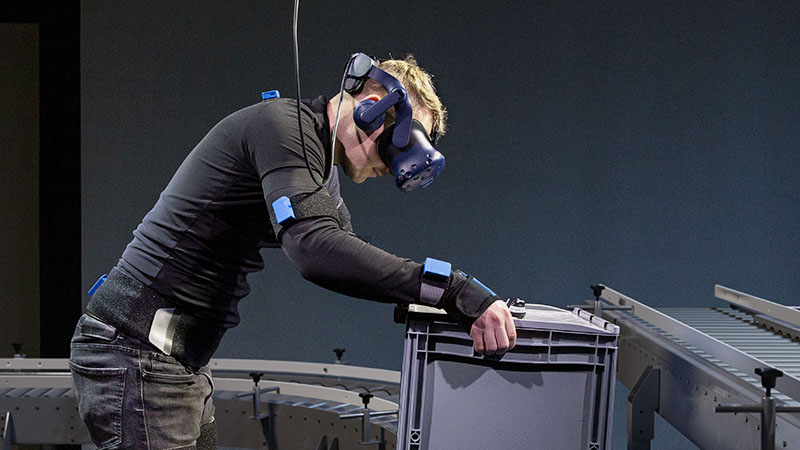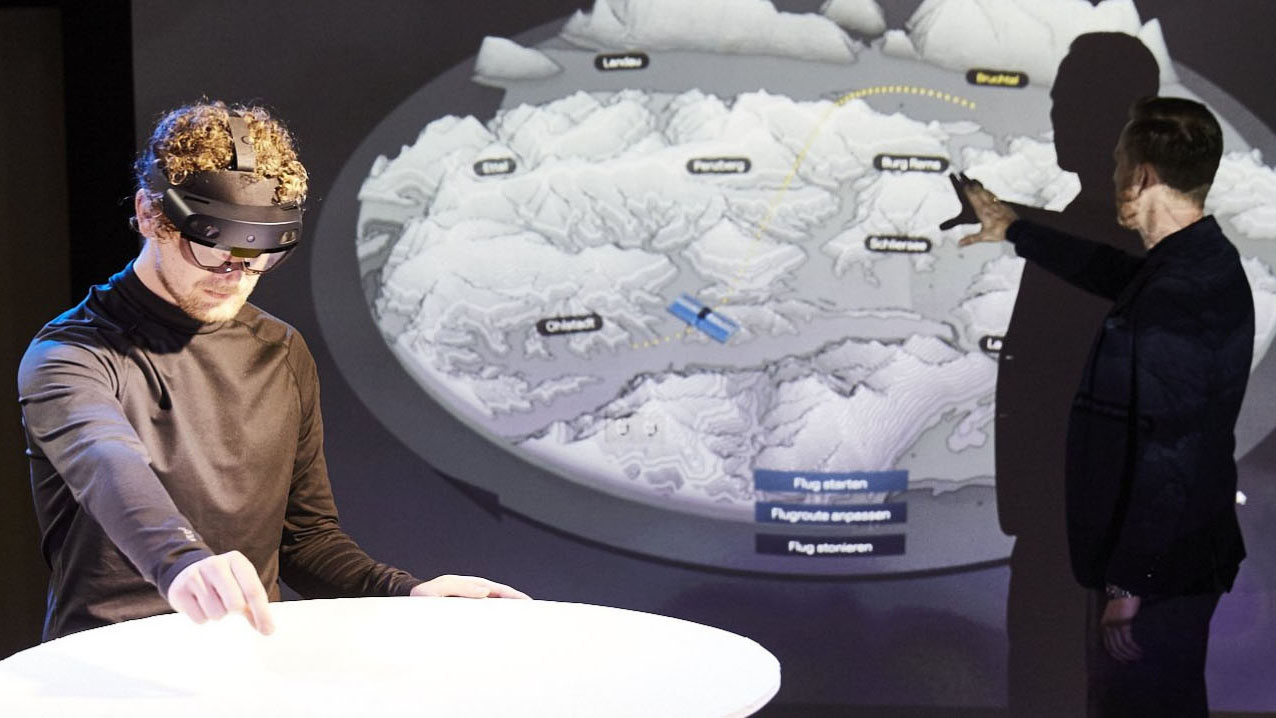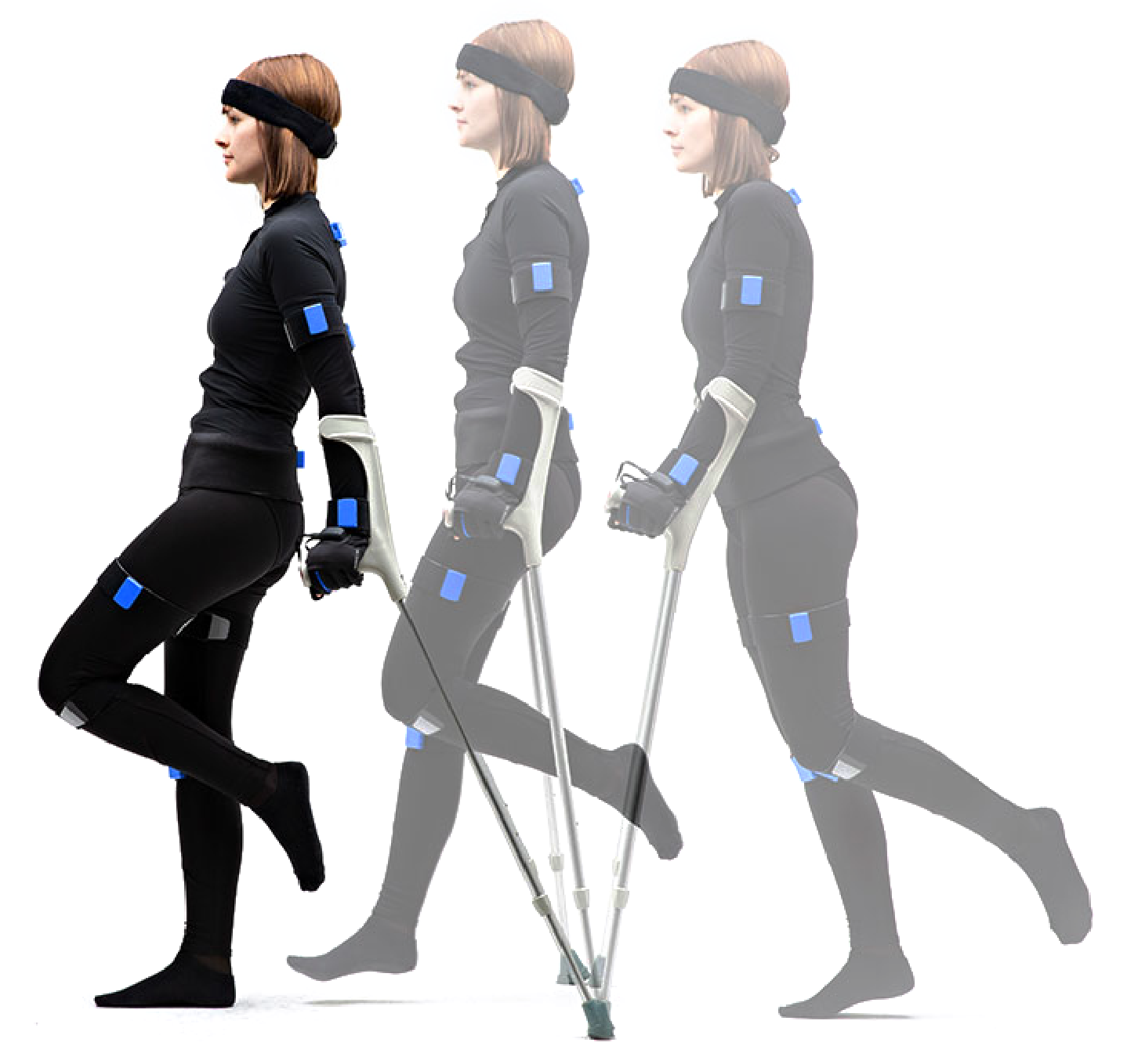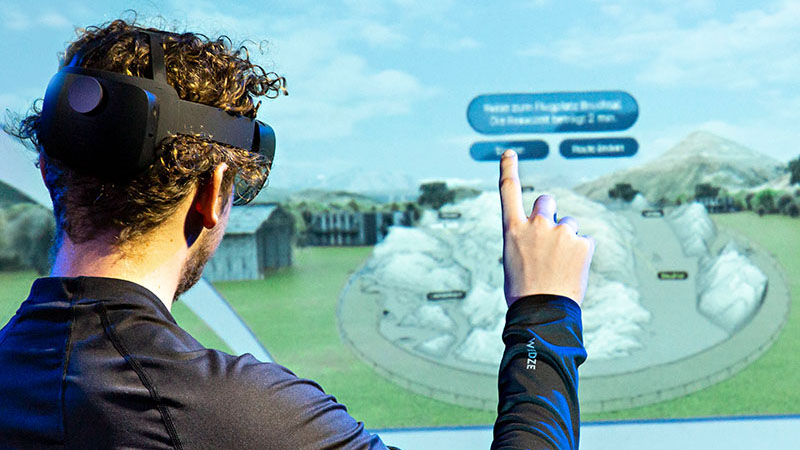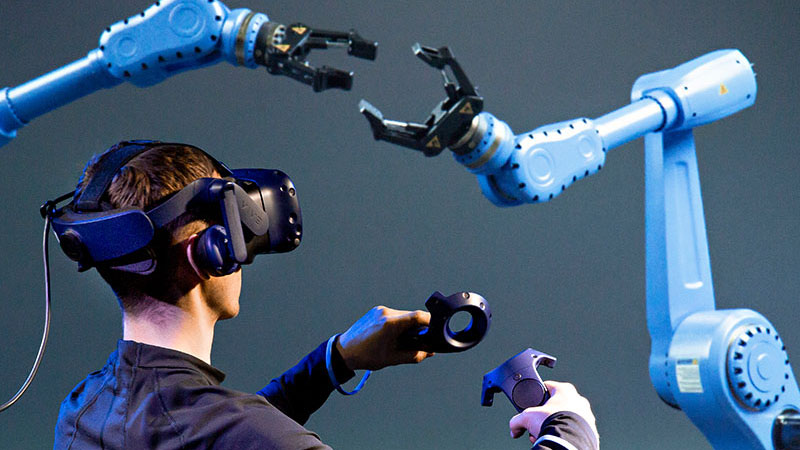Human Factors Lab
2col
Welcome
The Human Factors Lab at the Department of Design at Darmstadt University of Applied Sciences researches digital technologies and their application in human needs situations. Ergonomics, usability engineering, user experience design and human-robot collaboration are areas that address both the cognitive and physical characteristics of humans. The laboratory focuses on exploring the possibilities of design to record and analyse information about human behaviour, abilities and limits as well as other influencing variables (human factors), and the resulting findings can be incorporated into the design of products, systems, processes and workplaces to optimise them and create innovations.
The research lab was founded in 2020 by Prof Philipp Thesen and Prof Tino Melzer. As an institution of the Institute for Design Research at Darmstadt University of Applied Sciences, the professors and their team conduct applied research in cooperation with partners from industry. The lab also serves to expand and deepen teaching content in the field of human-system interaction and human factors.
Product and experience innovations as well as purposefully designed working and living spaces fail if they are not accepted by their future users, and digital and technical products in particular often fail because they are not intuitive enough or are difficult to use.
In the Human Factors Lab, analyses are therefore carried out before the prototype stage to determine how human factors affect use, in particular physiological and cognitive factors.
welcome3
Numerous test and simulation devices are available to the research centre for this purpose: With the help of virtual and data-supported ergonomics and movement analyses, data is determined that provides information on the ergonomic optimisation of products and working environments. The observation and evaluation of human behaviour and human interaction with simulated products in virtual environments generates usability knowledge, e.g. about the placement of people in cockpits, the positioning of control elements or the comprehensibility of interfaces. In addition to virtual reality tools, brain-computer interfaces and motion-tracking suits equipped with sensors are used to record movement sequences.
A central task of designers in the digital age is the humanisation of technologies. The human-centred design of the human-machine interface is a high priority. Human factors analyses help to place people at the centre of technical developments and product innovation in order to ensure intuitive and efficient operation, acceptance and adoption and to make them successful.
Laboratory support
The Human Factors Lab is used to carry out research and development projects and to expand teaching content in the field of human-system interaction and human factors.
The lab is used as part of selected courses in these subject areas and is supported by staff.
There is also the opportunity to write a dissertation as part of our research co-operations and projects.
equipment
Digital sensors, virtual reality headsets and motion capturing hardware enable designs and applications to be experienced and tested virtually during the development phase. Our laboratory equipment enables employees and students to work on real-time prototypes and modelling in virtual simulations. In doing so, they gain important insights into the areas of ergonomics, usability and user experience at an early stage in the development of their designs. The following technologies are used:
Projection Mapping
Our high-performance projectors enable projection mapping, i.e. the display of real objects by means of projections. This allows surfaces, contours or entire objects to be brought to life, important information or calls to action to be displayed or even complex information to be added, for example in the field of science communication.
Augmented, mixed and virtual reality
The virtual reality headsets and corresponding high-end laptops in our lending department enable the realisation of complex applications and visually demanding simulations. This hardware enables the use of different technological approaches:
Virtual Reality (VR)
A completely simulated experience that can be similar to or completely different from the real world.
Augmented reality (VR)
The extension of the real environment through interaction with virtually inserted, computer-generated objects.
Mixed reality (VR)
The merging of the real and virtual worlds to create new environments and visualisations in which physical and digital objects coexist and interact in real time.
Sensor and interface development
We offer students the opportunity to experiment with microcontrollers, single-board computers and various sensors. Our laboratory equipment includes Arduino and Raspberry Pi devices as well as the possibility of finding individual solutions by combining existing hardware.
ergonomics
Ergonomics and movement analyses
We work on the analysis and ergonomic optimisation of workstations in industry, the skilled trades, the health and care sector and public institutions.
With the help of motion capturing, we realise a fast and precise real-time conversion of body movements into 3D kinematic data. This enables us to analyse physical stress situations quickly and precisely.
Motion tracking technology enables us to obtain comprehensive data on the physical mobility of people of all ages in a wide variety of life situations - a significant advantage in the development of barrier-free product solutions and in the development of human-centred workplaces.
2col
Usability analyses and virtual prototyping
The combination of motion capturing, eye-tracking and virtual environment tools enables design analysis in the product development process prior to physical 3D modelling.
The observation and evaluation of physical human interaction with simulated products in virtual environments generates usability knowledge, e.g. about the placement of people in cockpits, the positioning of control elements or the comprehensibility of interfaces.
Simulation promotes variance, supports the validation and communication of design concepts and makes a significant contribution to saving time, costs and resources. In addition to product development, we work with mixed reality prototyping in the CAD-based simulation of architecture and urban planning.
col2
Human-machine interaction
The simulation of virtual environments and the analysis of human interaction allow us to draw conclusions about the design of user interfaces, the optimisation of communication between humans and machines and the ergonomic adaptation to the needs of humans.
Our investigations explore the way in which humans interact with machines and experiment with alternative ways of inputting, transmitting commands or receiving feedback. Human anatomy and perception are central to designing pleasant, efficient interactions and intuitive operation.
The research approach of the Human Factors Lab goes beyond classic interfaces such as touchscreens, hand tracking or speech analysis and follows a holistic concept that combines cutting-edge technology and human needs.
2col
accordion
Visualisation
Digital prototypes of design drafts for the communication and evaluation of visual appearance and quality of use as well as the creation of virtual environments with a focus on the immersion of multisensory worlds of experience, e.g. architectural, urban planning and interior design drafts for the communication and evaluation of the quality of space and use.
Laboratory utilisation
The laboratory is open as part of selected courses in the fields of human-system interaction and human factors and is supported by staff. The contact person here is Thomas Beisiegel, Technical Director of the laboratory.
There is also the opportunity to write your own thesis in the context of research collaborations and projects.

